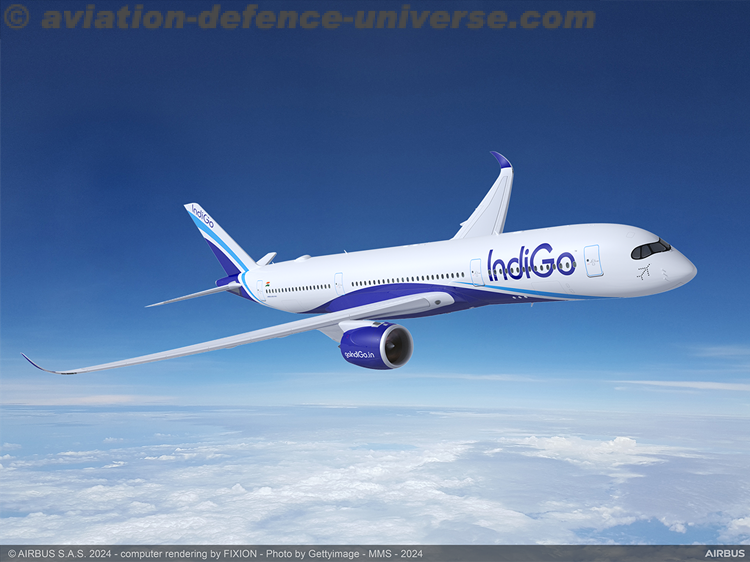New Delhi. 05 February 2019. MBDA offers next generation air combat capabilities for the Indian Air Force . It will be exhibiting a full range of missiles and missile systems on Stand AB.2.23 designed to provide next generation air combat capabilities, including air dominance, strike and maritime engagement, for the Indian Air Force.
Aero India 2019 will also be the first Air Show where L&T MBDA Missile Systems Ltd, our joint venture with Larsen & Toubro, will exhibit. L&T MBDA Missile Systems Ltd will be present on Stand AB.2.24.
AIR DOMINANCE: METEOR is MBDA’s revolutionary ramjet powered and network-enabled beyond visual range air-to air missile, which is widely recognised as a game changer for air combat. Key to this is Meteor’s throttleable ramjet engine, active radar seeker and datalink that combine to provide unmatched endgame speed and manoeuvrability at greatly extended ranges, resulting in its all-important ‘No-Escape Zone’ being several times greater than any other existing or planned BVR weapons. Meteor is a six European nation programme that will provide the key future BVR air-to-air armament for Europe’s new generation of combat platforms. The Indian Air Force is receiving this unrivalled system on its new Rafale aircraft.
ASRAAM is being delivered to the IAF as its New Generation Close Combat Missile programme. With its large rocket motor, and clean aerodynamic design, ASRAAM has unrivalled speed and resultant aerodynamic manoeuvrability and range. ASRAAM gives it a high kinematic capability that delivers superior end-game performance for within visual range air combat. ASRAAM will arm the IAF’s upgraded Jaguar fleet, and potentially other IAF platforms. MICA is being delivered for the IAF’s Mirage 2000 upgrade and for Rafale. Showcased on MBDA’s stand, this is the only missile in the world featuring two interoperable seekers (active radar and imaging infrared) to cover the spectrum from close-in dogfight to long beyond visual range. Its ability to fly out to BVR in passive mode before the seeker locks on in the final stages of the end game has earned it the nickname “silent killer” as the target has little time to react or to deploy effective countermeasures.
MISTRAL ATAM has been delivered to India to equip the HAL weaponised version of the Advanced Light Helicopter, the ALH Rudra. The system is based on two launchers each deploying two MBDA airto-air Mistral missiles. Given the wide range of roles that the Rudra will have to undertake, ATAM will provide the helicopter’s crew with a weapon that is not only easy to use but one that can be operated in the whole flight envelope from nap of the earth to 15,000ft and at flight speeds from hovering to up to 200 knots. The same system has successfully undergone integration on the LCH platform also manufactured by HAL.
BRIMSTONE goes from strength to strength with trials and combat deployment clearly demonstrating the unmatched capabilities of this weapon in meeting the operational challenges of today.
MARITIME SUPERIORITY: EXOCET probably ranks as the world’s best known anti-ship missile. It is known in India where the submarine variant, SM39, has been delivered to the Indian Navy to arm its Scorpene submarines (Project 75). The AM39 version can be launched from Maritime Patrol Aircraft, strike fighters such as the Rafale as well as medium to heavyweight helicopters. Features such as low signature, sea skimming flight at very low altitudes, late seeker activation, enhanced target discrimination and ECCM combine to make this a redoubtable weapon indeed. In its Block2 Mod2 latest evolution it is now fully compliant with the latest generation of aircraft platforms. The MM40 Block 3 variant within the EXOCET family is a 200+ km class weapon suitable for launch from ships or from coastal batteries. Already in service, this latest generation EXOCET features 3D waypoints, low sea-skimming flight profile and the ability to strike coastal land targets as well as ships.
Sea Ceptor is the next-generation, ship-based, all-weather, air defence weapon system. Through the use of new advanced technologies, Sea Ceptor provides complete protection against all known and projected air targets including saturation attacks across 360° simultaneously. Sea Ceptor utilises the CAMM missile that features a next generation all-weather RF-seeker, two-way data link and soft vertical launch system to provide a step-change in performance compared with previous generation systems. Sea Ceptor will protect both the host ship and high value units in the local area. The Weapon System has the capability to intercept and thereby neutralise the full range of current and future threats including combat aircraft and the new generation of supersonic anti-ship missiles.
MARTE is a family of fixed and rotary wing and ship-launched anti-ship missile weapon systems designed to meet operational requirements in complex littoral environments and blue water scenarios. At Aero India 2019, MBDA is displaying MARTE ER, the latest addition to the family. The high sub-sonic MARTE ER is equipped with a turbo-jet engine giving it a range of well over 120 km, thus enabling it to engage enemy vessels well over the horizon. Other enhancements include an optimized terminal guidance system and 4D waypoints including altitude and time for simultaneous time on target attack. MARTE ER offers rotary and fixed wing aircraft, ships and land based coastal defence systems a significant operational advantage.
MBDA will also be displaying its NCM (Naval Cruise Missile). This very long-range surface attack stand-off cruise missile is designed to attack deep into enemy territory. Given its range, it will provide navies and surface and sub-surface vessels with the ability to maintain a prolonged dissuasive force in theatre unlike an aircraft launched missile. Drawing on elements of the combat-proven SCALP/Storm Shadow and weighing some 1,400 kg with an overall length of around 6.50m and a diameter of 0.5m, NCM offers destructive power against key infrastructure targets. Maximum precision and minimum collateral damages are assured thanks to the weapon’s guidance system which combines inertial guidance, terrain matching, and GPS with an imaging infrared seeker to achieve metric accuracies in the terminal phase. The missile has already been tested for both surface ship and submarine launch (vertically launched for the former and via the torpedo tubes for the latter with the submarine version housed in a special sea to air transition container). Surface ship operational capability was declared in May 2015 after a series of test firings had been successfully completed.






















































































































